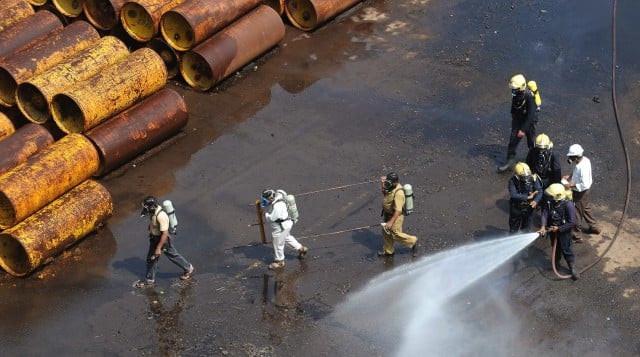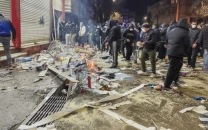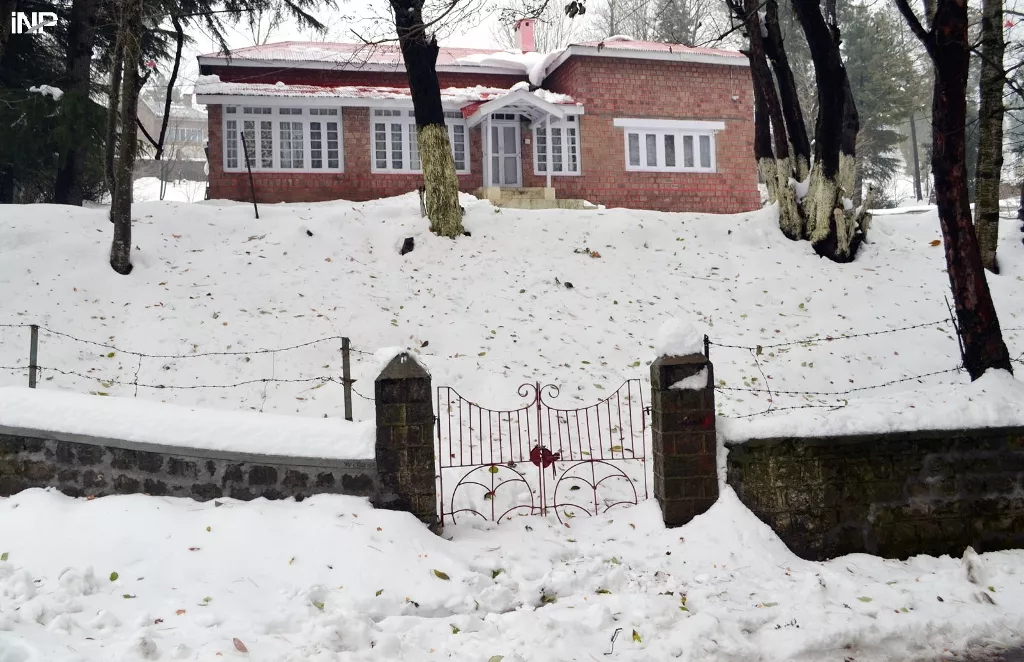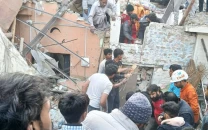Scores in hospital after Mumbai gas leak
Scores of people were treated in hospital on Wednesday after a chlorine leak from an industrial area in Mumbai.

At least 10 people were in intensive care after the leak, which the city’s chief fire officer Uday Tatkare said happened in the Sewri industrial area on land owned by the Mumbai Port Trust.
“One of three cylinders stored in a courtyard at a warehouse owned by the trust leaked. The leakage has been brought under control and we are in damage control mode,” he told AFP by telephone from the scene.
Firefighters in protective suits sprayed metal cylinders at the site, which has been cordoned off as a precaution during the clean-up operation in India’s most populous city.
Four firefighters were among more than 80 people taken to the state-run Jamshetjee Jejeebhoy Hospital suffering from breathing problems, the fire chief said.
A hospital spokesperson said that 72 people were in stable condition while 10 others were in intensive care. At least seven other people were being treated in other hospitals.
The land owned by the Mumbai Port Trust is an industrial area mainly used for storage and delivery of cargo and containers. It has many derelict factories and warehouses and is also home to a slum.
Mumbai Port Trust chairperson Rahul Asthana said that some operators using the site import empty chlorine cylinders and fill them for re-use. “Some residual chlorine appears to have been left and that leaked out into the atmosphere,” he said. “It’s under control. We have put sodium hydroxide on it.”
Chlorine is used as a common disinfectant and in water treatment to prevent communicable diseases like cholera and typhoid. It has applications in industries like textiles, printing, plastics and pharmaceuticals and was also used as a chemical weapon in World War I.
Breathing in chlorine gas can cause coughing and vomiting as well as irritation to eyes, while prolonged exposure may cause permanent lung damage, respiratory failure and even death.
V B Sant, director-general of the National Safety Council of India, said that awareness of the dangers of hazardous chemicals had improved in India since the 1984 Bhopal gas tragedy, which was the world’s worst industrial disaster. “Such cases are becoming rarer. It’s definitely improving but it’s a continual process,” he said.
Meanwhile, the shipping ministry has sought a detailed report on the leakage.
“These cylinders have been kept in an area which is meant for storage of hazardous goods for the past few years,” the ministry said in a statement, adding that it is “closely monitoring the situation”.
“As per the records of Mumbai Port Trust, these cylinders were empty. Mumbai Port Trust is checking its records to find out whether any action had been taken for disposal of the hazardous material in the past,” the statement said.
“The situation is presently under control, and chairman, deputy chairman, traffic manager and other senior officials of Mumbai Port Trust are at the site, where relief and rescue works are being undertaken,” the ministry said.
Published in The Express Tribune, July 15th, 2010.



















COMMENTS
Comments are moderated and generally will be posted if they are on-topic and not abusive.
For more information, please see our Comments FAQ